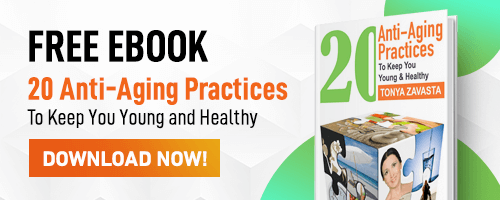Propylene Glycol…Why is it Present in Acti-Mask?

A long-time customer writes…
I'm quite shocked to see you have added propylene glycol to your recent mask [Acti-Mask]... I’m amazed! I’ve been a customer of yours for 10 years now and I strictly avoid propylene glycol in all my cosmetics.
What is propylene glycol?
The name propylene glycol (PG) is a scientific term used to describe a chemical used as a stabilizer employed to prevent a substance—in our case, clay mask—from changing its composition in response to possible temperature fluctuations. It’s widely used in cosmetics to prevent the product from freezing during cold weather and from melting during summer heat. In recent years, it has become controversial, as it is also an ingredient in antifreeze.
I work with a very knowledgeable and health-conscientious cosmetic chemist. She strongly advised me to use the very ingredient in question. She advised that it would do the job, while requiring the smallest possible concentration.
“Poison is in everything, and no thing is without poison. The dosage makes it either a poison or a remedy,” said the ancient sage Paracelsus—a remark which became a basic principle of toxicology. Nothing is inherently entirely good or bad… it all depends on the dose and the use to which it’s put.
In very low concentration, PG also accomplishes other positive things. It helps active ingredients to better penetrate the skin. PG acts as a solvent and an emulsifier. It helps produce a homogeneous mixture so that your mask won’t be clumpy when you apply it and won’t have separated into water and clay when you receive it. PG is a humectant. This means your mask will hold moisture and won’t dry up after a few weeks on your bathroom counter.
In low concentrations, as any chemist could tell you, PG is quite harmless. Yet with its small presence, it performs many functions. To accomplish the same effects in our mask without propylene glycol, we’d need a combination of several similar ingredients, and in higher concentrations.
The fact is, lots of research has been done on propylene glycol. A good deal of that research says PG is safe. The FDA includes pharmaceutical-grade PG on its Generally Recognized As Safe (GRAS) list. The World Health Organization also considers it safe for use. PG is often, indeed, used in food.
Not surprisingly, the findings can be more than a little inconsistent. Much of this is dependent upon the concentration of PG involved and, of course, upon the specific product in which the PG is used. Further, it also depends on the particular hypothesis researchers are testing. Marketing reasons also come into play. A company starts using a new ingredient… that new ingredient is all the rage in the advertising, so the old ingredient gets discredited.
Something even more misleading is happening. Take facial masks, for example. The following is a common practice these days. A facial mask is promoted as “natural,” yet the advertising simply omits ingredients that might alarm you as a buyer. But for a ready-to-use mask to perform as it should, it has to include preservatives, emulsifiers, stabilizers, anti-freezing and anti-melting ingredients, and so on. These components all have scary sounding names, so you won’t see them on the ingredient list. If you try writing the company to ask for a full list of ingredients, getting it will be like pulling teeth.
I go for total transparency. I list everything. At least you are getting the real picture from me. My priority has always been my own best results—what’s worked for me, my health, my skincare, and my anti-aging. I’ve never sought any great expansion for my business. Every product you see in my store was developed to fulfill my own needs. I care deeply about the safety and effectiveness of my products. And I offer to my customers only what I use myself.
There is no way to avoid toxins entirely. There are everywhere. In considering what might or might not be harmful in an additive, concentration is the key. In reality, anything can be proven “poison.” I recently came across some research indicating that greens have naturally occuring toxins in them and can be bad for your health. The issue, naturally: How much greens?
My own emphasis is on maintaining a cleansing lifestyle and building a strong immune system. So I don't eat anything that has a long shelf life (except dry products, like nuts and seeds, which need to be soaked or combined with water before using). Of course, in the same vein, it’s best if we make our own cosmetics. For example, get a powdered clay that we can mix with water, oils, and aloe vera, and maybe some freshly squeezed lemon juice, before using. Unfortunately, I am way too busy to do that. So, I go with cosmetics that have a shelf life… and it is here that the ingredients take center stage. I’ve done my research. For now, I am okay with PG. We are a very small company and we order small batches. I’ll keep on investigating, and when I find a better ingredient, I’ll opt for it.

